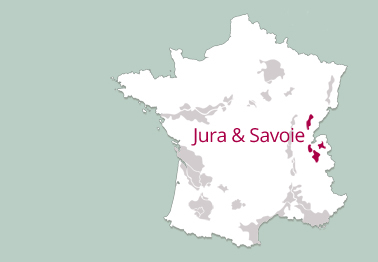
It is a very great shame that little is exported, for Jura and Savoie provide an experience completely different from anything else that France, and the world, has to offer.
Styles of Wine
White, red and rosé wines are all produced, and where some owe their influence to Burgundy, and some are more similar to those ofSwitzerland, there are a number that are unique.
The 'vin jaune', or yellow wine, is often compared to a fino sherry. After being fermented in the normal way, the wine is aged for six years in a barrel and left largely alone. A film of yeast forms on top, a third will evaporate and the distinctive yellow colour will develop. What is produced is unique, expensive and hard to get hold of. 'Vin de paille' is made from dried grapes and is rich and alcoholic. Both hail from Jura.
Key Vines
Pinot Noir, Gamay and Chardonnay arrived here from Burgundy, and the white Chasselas is now synonymous with Switzerland, but Jura and Savoie have their fair share of local vines. Trousseau and Poulsard (it can also be spelt 'Plousard') are red grapes producing pale wines that are not to everyone's taste, whilst Savagnin is the premier white along with Roussette, Roussanne, Molette and Jacquère.
Climate and Terroir
These regions are mountainous and isolated from much of the rest of France. They share a continental climate - of freezing winters, warm summers when rain and hail can be problematic, and favourable autumns - that provides a challenging environment for viticulture. Savoie, in common with wine growers in Canada, sites many of its vineyards next to large bodies of water, specifically Lakes Geneva and Bourget, which release invaluable heat for the ripening of grapes.
They both have soil which is a mixture of limestone and clay enriched with mineral deposits from a glacial past.
